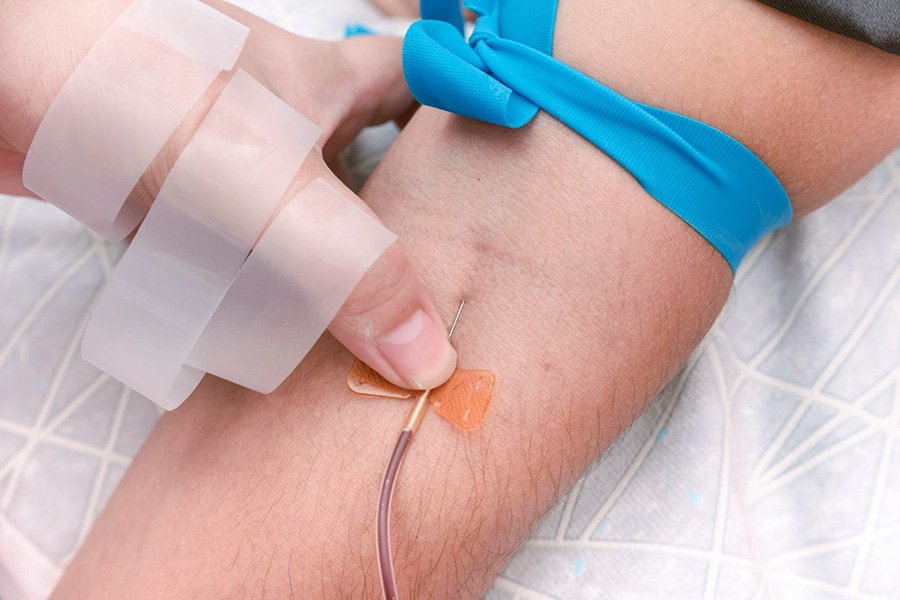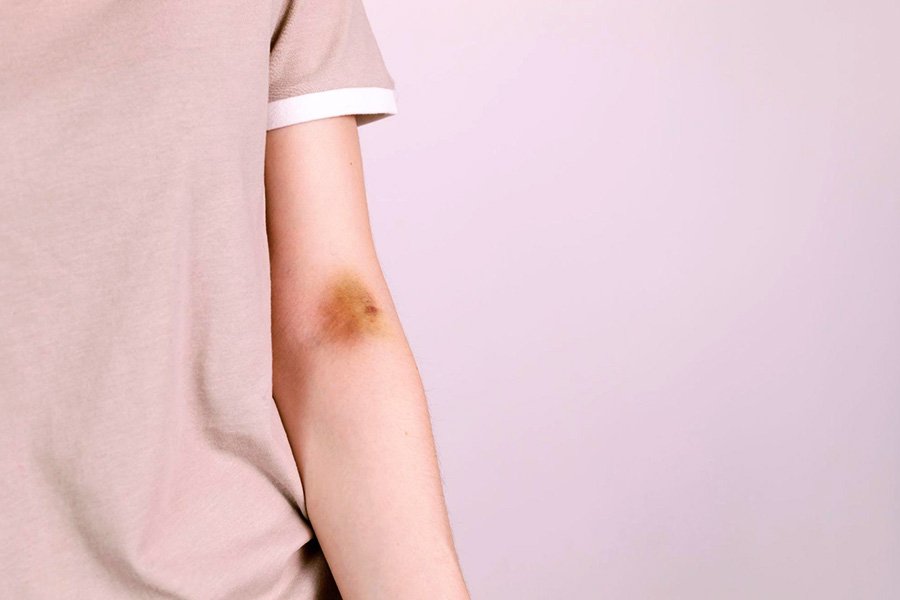Most nurses will need to get familiar with IV insertion. Some people have so-called “difficult” veins, so for the nurses, it is hard to find a vein and insert the IV needle. Usually, after many tries, the insertion spot might get inflamed and painful for the patient. That is why we have enlisted several IV insertion tips. These will make the process easier for both nurses and patients.
Stay tuned to discover different insertion advice, how to overcome potential challenges during insertion, post-insertion care, best practices, and safety considerations.

Source: shutterstock.com/ Photo Contributor: MDV Edwards
IV Insertion Tips
Nurses around the world use IVs daily to infuse fluids and medications and draw blood. IVs are extremely useful, but their insertion can be challenging from time to time, even for professional infusion services. Of course, with time and experience, the IV skills of the nurses get better, but in the meantime, they need to follow these IV insertion hacks:
Asking the patient to position properly
Selecting the right needle size
Palpating and visualizing the vein
Practicing finding veins in yourself
Preparing the skin with the antiseptic solution
Using a tourniquet
Asking the patient to position properly
It is important that the patient lies down or sits comfortably with their arm extended. The arm must also be supported at a certain level, allowing easy access to the chosen vein. It is also significant for the patient to be relaxed. Tell the patient to pump their fist, as this helps in finding a vein.
Selecting the right needle size
The size of the needle depends on the size and condition of the patient’s veins. For kids, a small gauge needle, such as 24-26, will be appropriate, while for adults, are usually needed 20-22 gauge needles. 16-18 gauge catheters are used for surgery patients. These patients usually need large volumes at rapid flow rates.
Palpating and visualizing the vein
Gently touch the patient’s arm to find the most suitable vein. A vein should feel bouncy and elastic. It should easily move when finger pressure is applied. Visualization is an important step in finding the most suitable vein. Other useful tips are good lighting and using a vein illuminator.
Practicing finding veins in yourself
You can practice finding veins in yourself or your family members. It is helpful to use the same hand or finger (the index finger is most sensitive). This practice aims to get familiar with how a vein feels.
Preparing the skin with the antiseptic solution
Clean the insertion site with an appropriate antiseptic solution. Start from the center and clean outward in a circular motion. Allow the antiseptic solution to dry before inserting the needle. This helps reduce the infection risk.
Using a tourniquet
Apply a tourniquet 4-6 inches above the planned insertion site, making sure it is tight at the needed level. The tourniquet helps enlarge the veins, making them more visible and accessible. Bear in mind to release the tourniquet once the IV is successfully inserted.
Overcoming Challenges During Insertion
No two people’s veins are the same. While some people have easily accessible veins, others have difficult veins. That is why knowing some tricks on dealing with difficult veins will help you overcome insertion challenges.
Dealing with difficult veins
If a vein is difficult to access, you can try these access tips:
Apply a warm and moist compress or towel over the area for several minutes before you clean and insert the needle. The warm compress will enlarge the veins and make them more visible.
Use a vein-finding device or vein illuminator to help you find the vein.
Consider using a small needle, which may be easier to insert in the vein.
Advise patients with difficult veins to drink water before having an IV procedure as being hydrated and maintaining a healthy fluid balance may help enlarge veins.
You can even ask the patient which veins are easier to find based on their previous IV history.
Do not slap the vein. Some nurses slap the insertion site, thinking that the vein will become more visible this way. This is not always helpful since veins have nerve endings that may contract upon painful stimulations.
Disinfect a wider area since another vein might show up.

Source: shutterstock.com/ Photo Contributor: staras
Managing patient discomfort and anxiety
Patient discomfort and anxiety are common during IV insertion. Follow this advice to ease their anxiety.
Explain the procedure beforehand, including the purpose and duration of the IV.
Ask the patient not to watch because when they lift their head to watch, they automatically pull back their arm, making you lose your insertion site.
Keep the patient informed through the process, give them updates, and explain how they might feel.
Give them positive feedback, like “You are doing great”, as this may relax and encourage them, and they will feel less stressed next time.
Use distraction techniques like engaging in conversation or playing some relaxing music.
Avoiding complications
You can reduce the risk of complications during IV insertion if you follow these tips:
Use proper aseptic technique and follow strict infection prevention protocols.
Make sure to insert an IV from the correct angle.
Secure the IV catheter properly to prevent dislocation.
Check the IV site for signs of complications like redness, pain, swelling, or leakage.
Observe the patient for reactions such as allergies, infection, etc.
Document the procedure correctly. Double-check all the information like needle size, date, time, and noticed reactions or challenges during insertion.
Post-Insertion Care
Post-insertion care is as important as the insertion itself. It ensures uninterrupted functioning of the intravenous line and it is crucial to prevent complications. Post-insertion care includes securing the catheter, flushing the line, and documenting the procedure correctly.
Securing the catheter
After inserting the IV catheter, securing it is fundamental. It prevents accidental removal or displacement.
You can secure the catheter with transparent dressings or securement devices designed for IV catheters. Apply the dressing firmly. Remember that applying too tightly may restrict blood flow and cause discomfort to the patient. Monitoring and checking the catheter site and dressing is important to fix any dislodgement on time.
Flushing the line
The flushing frequency depends on the catheter’s type and the facility’s policies. If you use an aseptic technique, a syringe containing a sterile saline solution is attached to the IV catheter hub, and the line is flushed with a slow and steady push to clear the blood.
Flushing may prevent clot formation, ensure medication delivery, and keep the line open for future use.
Documentation
Detailed and correct documentation is needed after the IV insertion. Documentation should include the date and time of insertion, size, and gauge of the catheter, location (right or left arm, hand), site condition, type and amount of medication or solution given, complications, and adverse reactions.
Best Practices and Safety Considerations
In addition to the above-mentioned practices, there are several other factors and safety considerations to have in mind. These practices are important for maintaining infection control, ensuring proper disposal of sharps and equipment, and monitoring for complications.
Maintaining infection control
Infection control is very important in post-IV insertion care. Maintaining proper hand hygiene is fundamental before and after performing an IV. Nurses should wash their hands with soap and water or use an alcohol-based hand sanitizer.
Moreover, following an aseptic technique when delivering an IV insertion is vital. This involves cleaning the access port for at least 15 seconds and allowing it to dry before inserting the IV needle. Following sterile procedures should reduce the risk of introducing pathogens into the bloodstream, thus reducing the chance of infection.
Proper disposal of sharps and equipment
IV insertion involves the use of needles and sharp instruments. Proper disposal of these sharps is essential to prevent injuries and transmission of pathogens.
Sharps should be thrown away immediately after use in special containers that are leak and puncture-proof. It is also important that equipment such as syringes, tubing, and dressings should be disposed of according to facility policies.
Monitoring for complications
Regular monitoring and assessment of the IV site and the patient’s condition are essential to prevent and address any complications. Complications may include phlebitis (inflammation of the vein), local infection, hemorrhage (bleeding from the IV access site), swelling, and pain.

Source: shutterstock.com/ Photo Contributor: n.tati.m
Conclusion
All the mentioned IV insertion tips may help you avoid common mistakes. Among these IV insertion hacks are patient positioning, selecting the right needle size, vein palpitation and visualization, skin preparation, and use of a tourniquet.
It is also important to know how to overcome challenges during insertion. There are several techniques to deal with difficult veins, like applying a warm compress or using a small needle. There are also some ways to manage a patient’s anxiety and reduce their stress during the process. Finally, it is important to know how to avoid complications.
Post-insertion care is crucial since it may prevent complications and involves securing the catheter, flushing the line, and documentation. Moreover, when working with IVs, make sure to maintain hygiene practices, monitor the patient’s reaction to the IV, and dispose of the sharps and other materials at the designated bins.




